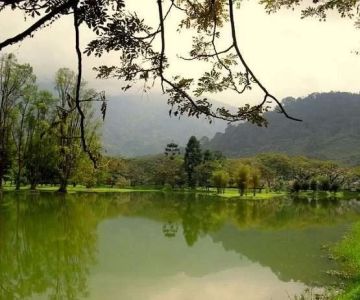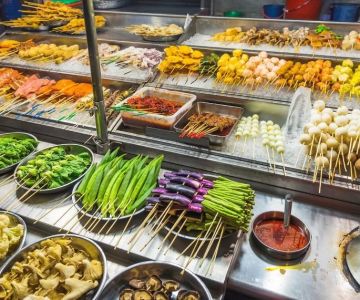
- understanding-the-roots-of-cultural-folk-music-in-malaysia
- major-ethnic-traditions-and-their-musical-identities
- traditional-instruments-that-define-malaysian-folk-sound
- real-story-the-resurgence-of-dikir-barat-in-modern-malaysia
- folk-music-as-cultural-preservation-and-education
- how-uak-travel-supports-cultural-exploration-through-music
1. Understanding the Roots of Cultural Folk Music in Malaysia
Cultural folk music in Malaysia is more than sound — it's storytelling, spirituality, and shared identity. With a population made up of Malays, Chinese, Indians, and dozens of indigenous groups, Malaysia’s musical landscape reflects its intricate multicultural makeup. Folk music here often accompanies rituals, harvest festivals, courtship ceremonies, and storytelling traditions passed down through generations.
Each performance is an echo of local values, beliefs, and environments. Whether it's a haunting Sape tune from Sarawak's Iban people or a lively Dikir Barat chorus from the Malay Peninsula, folk music in Malaysia speaks to both history and living culture.
2. Major Ethnic Traditions and Their Musical Identities
2.1 Malay Folk Traditions
Among the most widely recognized forms is Dikir Barat, a musical performance rooted in Kelantan. It involves a group of performers, often men, singing in unison with intricate hand movements and witty, often satirical, call-and-response lyrics. Another important form is Gamelan Melayu, which blends Indonesian heritage with ceremonial elegance, typically played at royal or cultural events.
2.2 Chinese-Malaysian Folk Influence
The Chinese diaspora in Malaysia brought with them traditional instruments such as the erhu, pipa, and guzheng, which are often played during festivals or local opera. In regions like Penang and Ipoh, traditional Chinese folk songs are still performed in clan associations and temples, especially during lunar celebrations.
2.3 Indian-Malaysian Contributions
Indian communities, particularly Tamil Malaysians, enrich the folk scene with devotional bhajans, rhythmic nadaswaram melodies, and the vibrant beats of thavil drums. Folk music is closely tied to religious and festive occasions like Thaipusam, where sound becomes both celebration and spiritual offering.
2.4 Indigenous and East Malaysian Voices
In Sabah and Sarawak, folk music often revolves around nature and oral mythology. The Sape (a traditional lute) from Sarawak has gained international attention for its meditative resonance, while bamboo-based instruments like the sompoton of the Kadazan-Dusun people highlight the creativity of indigenous soundcraft.
3. Traditional Instruments That Define Malaysian Folk Sound
3.1 Rebab and Seruling
The rebab (a bowed lute) and seruling (bamboo flute) are staples in many Malay folk ensembles. The rebab’s melancholic tone often opens performances, setting a ceremonial mood that is distinctly Malaysian.
3.2 Kompang and Gendang
These drums are the heartbeat of communal gatherings. The kompang is often played during weddings and national parades, producing rhythmic unity that invites participation. Meanwhile, the gendang comes in various regional forms and functions as both lead and support percussion.
3.3 Sape – The Soul of Borneo
Traditionally played by men in healing rituals, the sape has evolved into a concert instrument. It now features in jazz festivals and film scores, bridging traditional identity with modern relevance.
4. Real Story: The Resurgence of Dikir Barat in Modern Malaysia
In 2022, a viral video featured a group of Malaysian students performing Dikir Barat with lyrics commenting on online dating and politics — a modern twist on an old art. The video sparked renewed interest in the form, with youth groups from Kuala Lumpur to Johor forming their own troupes.
For performer Amir Hafiz, Dikir Barat is a family tradition. “My grandfather sang it in kampung halls. Now I’m performing it on TikTok,” he shared. This blend of humor, history, and harmony shows how folk music remains a living, evolving voice in Malaysia.
5. Folk Music as Cultural Preservation and Education
5.1 Teaching Through Sound
Many schools and cultural centers in Malaysia now use folk music to teach history and language. Lyrics often contain lessons about respect, family, and environment — values central to Malaysian life. This makes folk music a vehicle for informal but powerful education.
5.2 Festivals and Cross-Cultural Exchange
Events like the Rainforest World Music Festival in Sarawak bring together folk musicians from across Malaysia and the world, creating space for both preservation and innovation. Here, centuries-old songs meet contemporary arrangements, proving that tradition and experimentation aren’t opposites — they’re collaborators.
6. How UAK Travel Supports Cultural Exploration Through Music
At UAK Travel, we believe that music is one of the most meaningful ways to understand a culture. That’s why we offer curated cultural journeys that include live folk performances, visits to musical heritage centers, and opportunities to meet local artists. Whether you're in Penang’s clan houses, Kelantan’s performance pavilions, or Borneo’s riverfront longhouses, we make sure your experience resonates long after you return home.
Looking to explore the heart of Malaysia through its music? Let UAK Travel help you discover the pulse of tradition, rhythm, and cultural storytelling like never before.







 Malys Beauty Spa5.0 (3 reviews)
Malys Beauty Spa5.0 (3 reviews) Meliá Kuala Lumpur4.0 (3682 reviews)
Meliá Kuala Lumpur4.0 (3682 reviews) Tanah Perkuburan Islam Lama Pinggir Sungai Kuantan4.0 (1 reviews)
Tanah Perkuburan Islam Lama Pinggir Sungai Kuantan4.0 (1 reviews) OYO 44094 Bangi Lanai Hotel3.0 (363 reviews)
OYO 44094 Bangi Lanai Hotel3.0 (363 reviews) Habamama (Homestay Puncak Alam)5.0 (13 reviews)
Habamama (Homestay Puncak Alam)5.0 (13 reviews) Home Dr. Supian0.0 (0 reviews)
Home Dr. Supian0.0 (0 reviews) Exploring the Unique Designs of Mosques in Malaysia: A Journey Through Islamic Architecture
Exploring the Unique Designs of Mosques in Malaysia: A Journey Through Islamic Architecture Exploring the Architectural Beauty of Mosques in Malaysia: A Journey Through Islamic Architecture
Exploring the Architectural Beauty of Mosques in Malaysia: A Journey Through Islamic Architecture Visiting Malaysia’s Most Famous Mosques During Eid: A Unique Cultural Experience
Visiting Malaysia’s Most Famous Mosques During Eid: A Unique Cultural Experience How to Get to the Famous Mosques in Kuala Lumpur by Public Transport: A Complete Travel Guide
How to Get to the Famous Mosques in Kuala Lumpur by Public Transport: A Complete Travel Guide Discover the History of Masjid Titiwangsa in Kuala Lumpur: A Cultural and Architectural Gem
Discover the History of Masjid Titiwangsa in Kuala Lumpur: A Cultural and Architectural Gem Top Mosques to Visit During Ramadan in Malaysia: A Traveler's Guide
Top Mosques to Visit During Ramadan in Malaysia: A Traveler's Guide